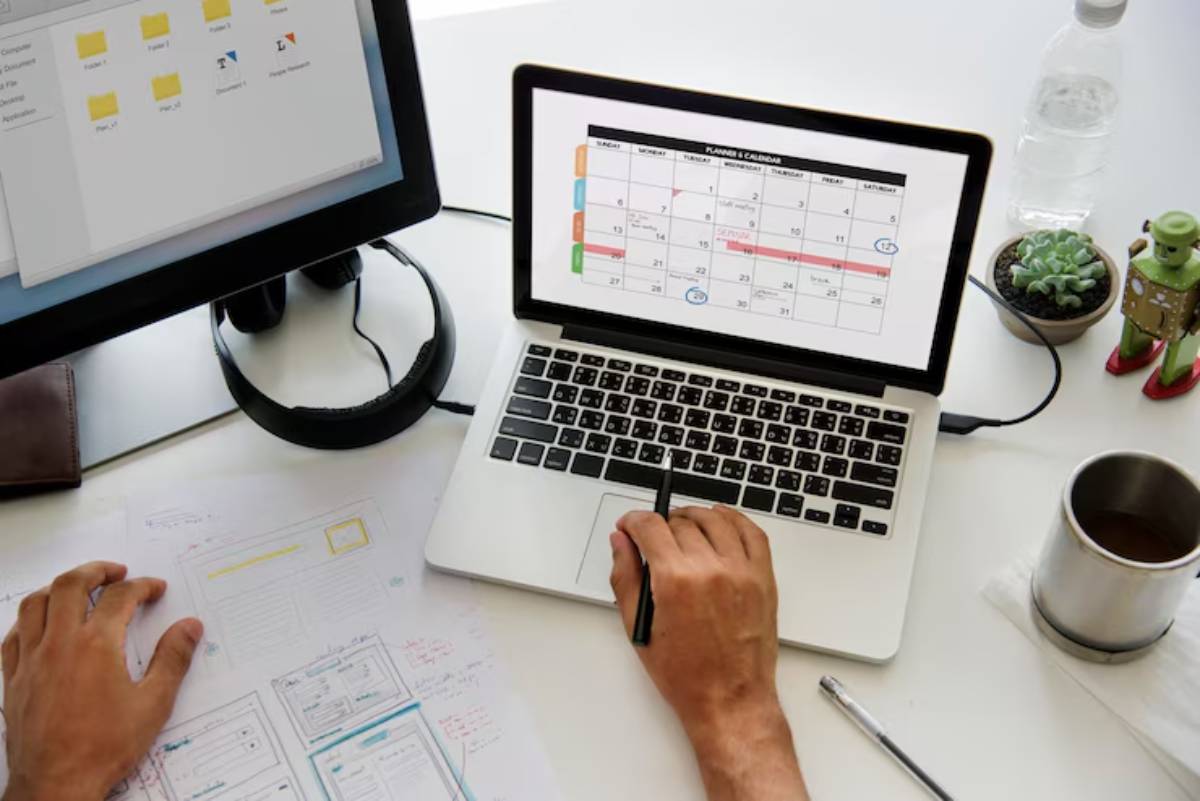
Time Blocking for Type A vs Type B Personalities
Ever wondered why your friend thrives on a jam-packed schedule while you prefer to let your day unfold? It might not be about discipline or motivation—but about personality type. When it comes to productivity, how you structure your time matters. And one of the most impactful tools in the productivity world today is time blocking.
But here’s the twist: time blocking isn’t one-size-fits-all. Your success with this method depends on your personality type—Type A or Type B. So, how do personality and productivity affect scheduling? Also, how can you tailor time blocking to fit your unique style?
In this article, we’ll look at how different schedule types impact personalities. We’ll also explore time blocking psychology. Finally, we’ll guide you in creating a routine that feels just right for you. Get practical tips, relatable examples, and expert insights to boost your productivity.
Understanding Time Blocking
Time blocking is a planning strategy where you divide your day into specific blocks of time, each assigned to a task or category of tasks. Unlike traditional to-do lists, this method allocates not just what you’ll do, but when you’ll do it.
Why it works:
- Reduces decision fatigue
- Minimises distractions
- Encourages deep work
- Creates structure and accountability
Now, let’s explore how this plays out based on who you are at your core.

Type A vs Type B: Personality Basics
Type A Characteristics:
- Highly organised
- Competitive
- Time-conscious and ambitious
- Often impatient or high-strung
Type B Characteristics:
- Relaxed and easy-going
- More flexible with time
- Creative and reflective
- Less focused on rigid achievement
Of course, most people aren’t purely one or the other—you might be a blend. But recognising your dominant style can help you structure your time more effectively.
Time Blocking for Type A Personalities
Why It Resonates
Time blocking naturally appeals to Type A individuals. It mirrors their preference for control, order, and measurable results. Assigning every hour of the day gives them a sense of purpose and momentum.
Ideal Block Style: Micro-Blocking
- Break your day into 15- to 30-minute segments
- Assign tasks precisely: “10:30-11:00 AM – Return client emails”
- Use colour coding to differentiate task types
Key Tools:
- Google Calendar with colour labels
- Notion for detailed planning templates
- Trello boards with time-based lists
Potential Pitfall: Over-Scheduling
Type A personalities may go overboard, leaving no room for breaks or interruptions.
Fix: Schedule buffer blocks between major tasks. Here’s how to create buffer blocks for maximum flexibility.
Use daily themes to reduce context switching. E.g., Tuesdays = meetings, Thursdays = deep work.
Sample Schedule for Type A:
- 7:00 – 8:00 AM: Workout
- 8:00 – 9:00 AM: Admin & Emails
- 9:00 – 11:30 AM: Project A Deep Work
- 11:30 – 12:00 PM: Break & Lunch
- 12:00 – 1:30 PM: Meetings
- 1:30 – 3:00 PM: Project B Deep Work
- 3:00 – 3:30 PM: Review & Plan Tomorrow

Time Blocking for Type B Personalities
Why It Needs a Twist
Type B individuals might find traditional time blocking restrictive. The idea of scheduling every hour can feel suffocating or unnatural.
Ideal Block Style: Flexible or Theme-Based Blocking
- Use broader blocks (e.g., 2-3 hour spans)
- Label blocks by theme or goal, not task
- Allow for flow and spontaneity
Key Tools:
- Paper planners for a tactile approach
- TimeBloc or Sunsama for visual drag-and-drop planning
- MindNode for mapping creative sessions
Potential Pitfall: Too Much Flexibility
Without some anchors, Type B users risk falling into unproductive wandering.
Fix: Use anchors like a morning routine, lunch break, or evening shutdown to create structure.
Incorporate creative zones where nothing is scheduled but exploration is encouraged.
Sample Schedule for Type B:
- 8:00 – 9:00 AM: Morning routine (walking, journaling, reading)
- 9:00 – 12:00 PM: Creative Work (writing, design, brainstorming)
- 12:00 – 1:30 PM: Lunch & Downtime
- 1:30 – 3:30 PM: Client or Admin Tasks
- 3:30 – 5:00 PM: Unstructured Catch-up Time

Psychology Behind the Differences
Structure vs Autonomy
Research in psychology shows that people differ in their need for structure vs autonomy. Type A individuals feel safer and more efficient within predefined frameworks. Type B individuals value autonomy and resist external constraints.
Time blocking psychology supports this: you must adapt the structure to match your emotional response to time.
Dopamine and Productivity Triggers
Type A people often feel good when they check off completed tasks. Type B folks thrive on engagement dopamine – enjoyment of the task itself.
Design your time blocks to reflect what rewards you.
Can You Change Your Type?
Not entirely—your personality tendencies are fairly stable. But you can cultivate habits from the other side for balance.
If you’re Type A:
- Learn to let go of perfect plans
- Leave white space for flexibility
If you’re Type B:
- Try planning just your mornings
- Use themed days to gently introduce structure
The key is not to fight your nature, but to work with it.
Real-Life Examples
Julia: The Type A Lawyer
Julia, a high-performing attorney, used to overfill her calendar, leading to burnout. She began time blocking with purpose. She set Friday afternoons as “meeting-free zones.” Productivity went up, and stress went down.
David: The Type B Illustrator
David hated rigid routines. He switched to loose time blocks with sketching, client work, and learning periods. He now completes more without feeling boxed in.
Both found success by personalising the framework.
Integrating Both Styles in One Life
Many of us have Type A days and Type B moods. The secret sauce? Hybrid time blocking.
Hybrid tips:
- Plan your mornings rigidly, leave afternoons open
- Schedule by task on workdays, by theme on weekends
- Include free-flow blocks in between scheduled ones
This approach provides the benefits of structure without losing spontaneity.
Final Thoughts: Honour Your Personality to Unlock Productivity
There’s no “right” way to be productive—only the right way for you. Time blocking isn’t about fitting into a mould. It’s about building a structure that supports your energy, mindset, and goals.
Knowing how your personality works with structure helps you create a schedule you enjoy. Whether you’re a checklist-loving Type A or a relaxed Type B, there’s a time blocking method for you.
Ready to personalise your plan? Dive deeper with our guide on adapting time blocks for creative thinkers.


